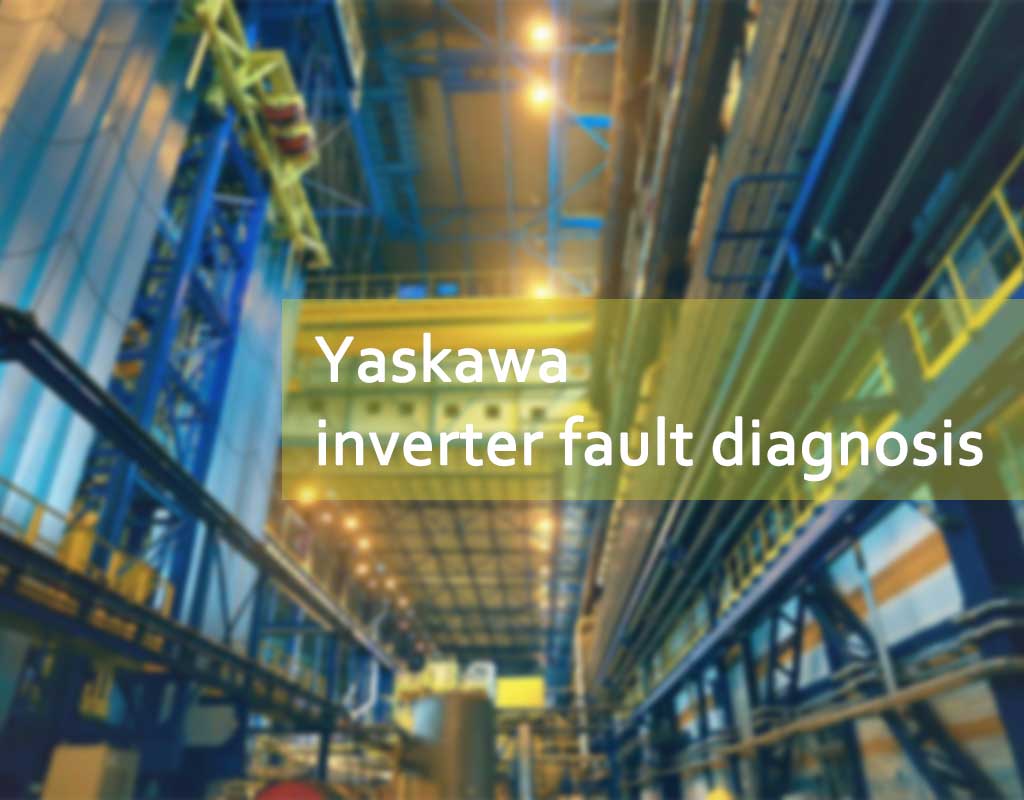Yaskawa inverter fault diagnosis
June 21, 2024
Yaskawa inverters are equipped with a manual operator on the electrical cabinet door, which displays various inverter parameter values and fault codes. The following are some experiences summarized from the actual use of inverters:
1)OC — Overcurrent
A. Is the acceleration time of the inverter too short?
B. Is the torque boost parameter too large;
C. Is the external load short-circuited or too heavy? For example, in a system where two motors drive a small car mechanism, if one motor is damaged, the other may experience overcurrent.
D. Is the PG detection loop abnormal, including the PG card and pulse encoder?
E. Is the inverter current sensor abnormal?
F. Are the main power device IGBTs abnormal?
G. If none of the above is the issue, disconnect the current sensor and DC detection point on the output side, reset and operate. If overcurrent still occurs, it is likely that the main control board or trigger board is faulty.
2)OV — Overvoltage
A. Is the deceleration time setting of the inverter too short?
B. In systems without a converter, if the contact resistance at the connection of the braking resistor is too high.
C. In systems with a converter, if the capacity of the power supply side transformer is too small, energy may not be fed back to the grid side in time when multiple gantry cranes work simultaneously (converter reports OV, grid capacity is insufficient).
D. Incorrect hardware jumper settings of the braking unit, causing premature braking.
3)OS — Overspeed
A. The brake on the deceleration side of the gearbox is malfunctioning.
B. Encoder malfunction at the motor shaft end (such as cracked grating disc).
C. Loose connection between the encoder and PG card, as well as between the PG card and main control board.
D. Loose encoder circuit ground wire introducing interference current.
4)UV — Undervoltage
Frequent connection of the AC input power supply on the inverter side or poor contact of the contactor MC of the bypass contactor can cause the current limiting resistor R1 to burn out and result in undervoltage fault. Other possibilities include:
A. Contactor on the DC bus side not working properly a) Coil without voltage (contactor does not pull in) b) Contactor feedback contact poor (contactor pulls in and then releases)
B. Low control power voltage (control power supply to the inverter).
C. External control of the control power, premature contactor pull-in (main power supply should be sent first, followed by control power, and the set time relay's delay should be appropriate, otherwise, a fault will be reported).
5)PGO — Speed detection open circuit
A. Loose connection wire between the encoder and PG card.
B. Brake did not open in time.
6)OL — Overload
A. If the current exceeds the rated current by 150% and lasts for 60s, OL1 fault is reported, indicating motor overload.
B. If the current exceeds the rated current by 180% and lasts for 10s, OL2 fault is reported, indicating inverter overload.
C. If the current exceeds the rated current by 200% and lasts for 5s, OL3 fault is reported, indicating system overload, i.e., steel structure torque protection.
Copyright 2025 @ Xiamen Wusu Network Technology Co., Ltd. .All Rights Reserved.Sitemap | Blog | XML | Privacy Policy
 Network Supported
Network Supported